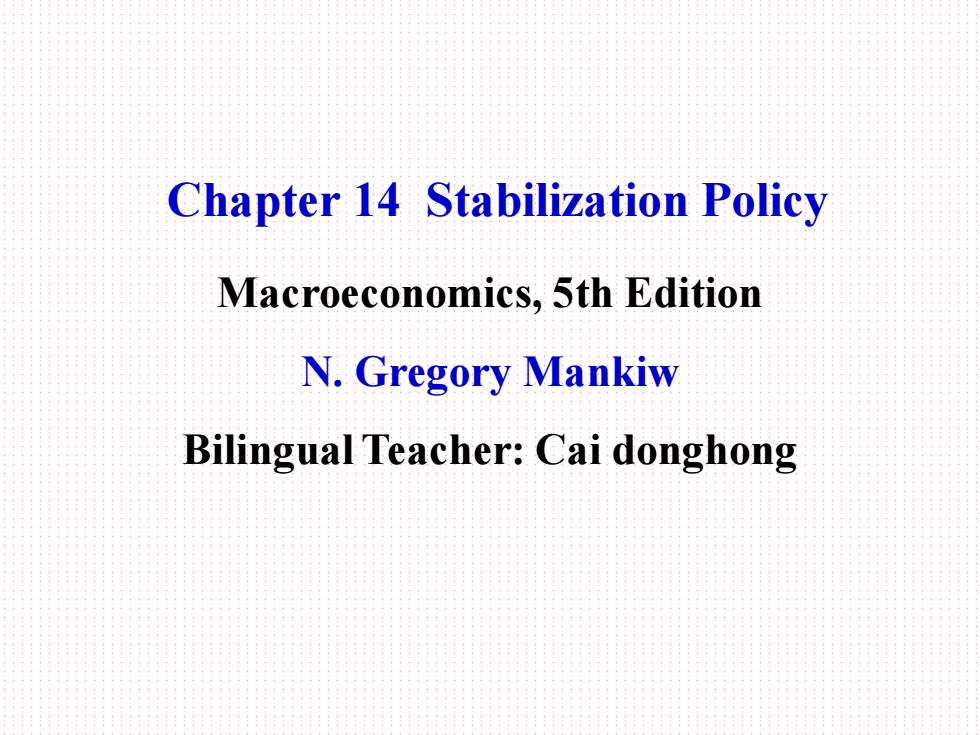
Chapter 14 Stabilization Policy Macroeconomics,5th Edition N.Gregory Mankiw Bilingual Teacher:Cai donghong
Chapter 14 Stabilization Policy Macroeconomics, 5th Edition N. Gregory Mankiw Bilingual Teacher: Cai donghong
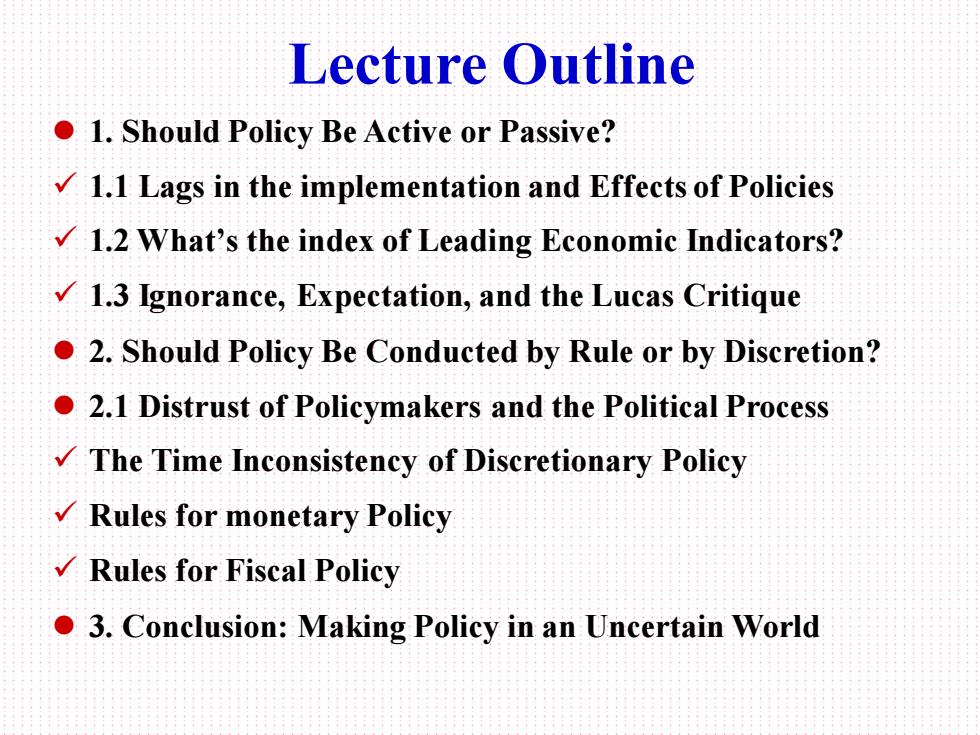
Lecture Outline 1.Should Policy Be Active or Passive? 1.1 Lags in the implementation and Effects of Policies 1.2 What's the index of Leading Economic Indicators? 1.3 Ignorance,Expectation,and the Lucas Critique 2.Should Policy Be Conducted by Rule or by Discretion? 2.1 Distrust of Policymakers and the Political Process The Time Inconsistency of Discretionary Policy Rules for monetary Policy Rules for Fiscal Policy 3.Conclusion:Making Policy in an Uncertain World
Lecture Outline ⚫ 1. Should Policy Be Active or Passive? ✓ 1.1 Lags in the implementation and Effects of Policies ✓ 1.2 What’s the index of Leading Economic Indicators? ✓ 1.3 Ignorance, Expectation, and the Lucas Critique ⚫ 2. Should Policy Be Conducted by Rule or by Discretion? ⚫ 2.1 Distrust of Policymakers and the Political Process ✓ The Time Inconsistency of Discretionary Policy ✓ Rules for monetary Policy ✓ Rules for Fiscal Policy ⚫ 3. Conclusion: Making Policy in an Uncertain World
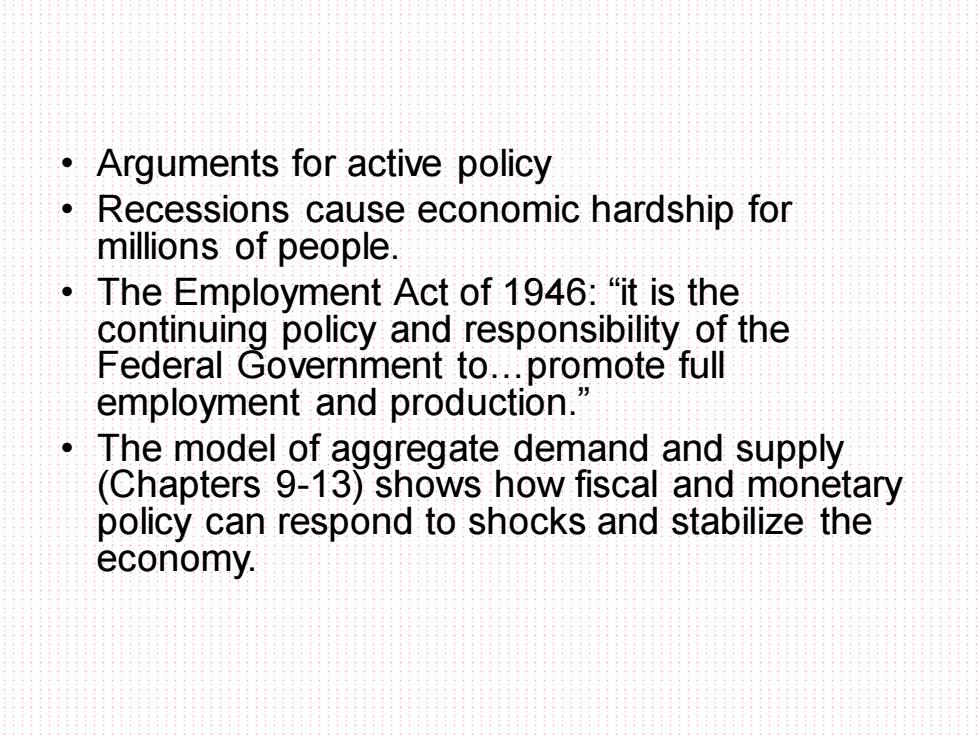
Arguments for active policy Recessions cause economic hardship for millions of people. The Employment Act of 1946:"it is the continuing policy and responsibility of the Federal Government to.promote full employment and production." ● The model of aggregate demand and supply (Chapters 9-13)shows how fiscal and monetary policy can respond to shocks and stabilize the economy
• Arguments for active policy • Recessions cause economic hardship for millions of people. • The Employment Act of 1946: “it is the continuing policy and responsibility of the Federal Government to.promote full employment and production.” • The model of aggregate demand and supply (Chapters 9-13) shows how fiscal and monetary policy can respond to shocks and stabilize the economy
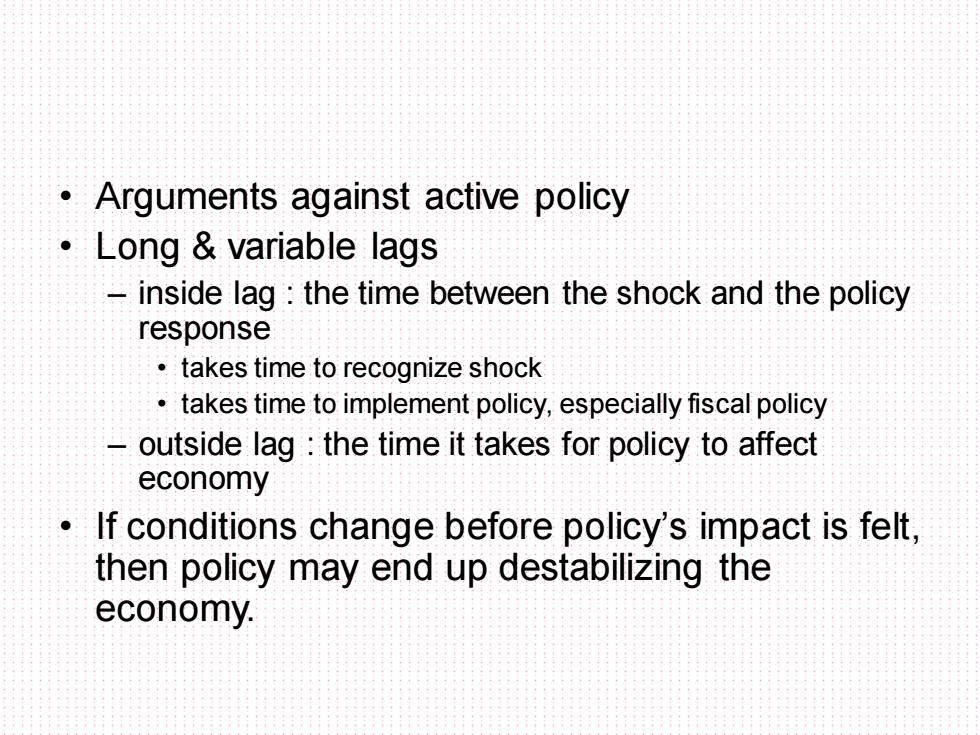
Arguments against active policy Long variable lags -inside lag:the time between the shock and the policy response takes time to recognize shock takes time to implement policy,especially fiscal policy -outside lag the time it takes for policy to affect economy If conditions change before policy's impact is felt, then policy may end up destabilizing the economy
• Arguments against active policy • Long & variable lags – inside lag : the time between the shock and the policy response • takes time to recognize shock • takes time to implement policy, especially fiscal policy – outside lag : the time it takes for policy to affect economy • If conditions change before policy’s impact is felt, then policy may end up destabilizing the economy
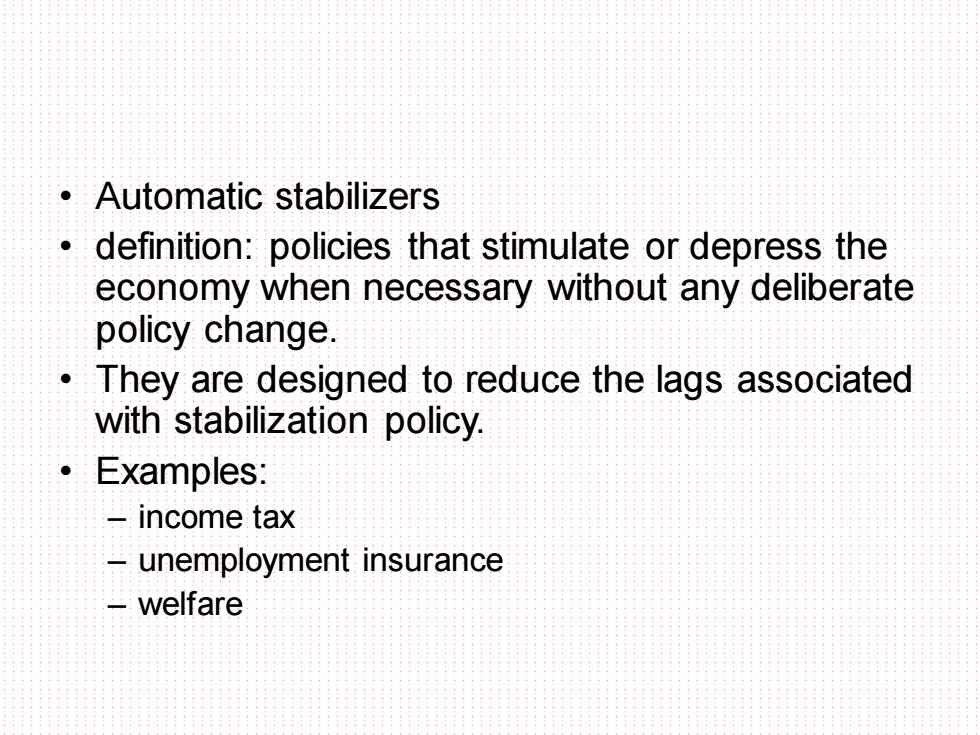
Automatic stabilizers ● definition:policies that stimulate or depress the economy when necessary without any deliberate policy change. They are designed to reduce the lags associated with stabilization policy. 。Examples: income tax -unemployment insurance -welfare
• Automatic stabilizers • definition: policies that stimulate or depress the economy when necessary without any deliberate policy change. • They are designed to reduce the lags associated with stabilization policy. • Examples: – income tax – unemployment insurance – welfare